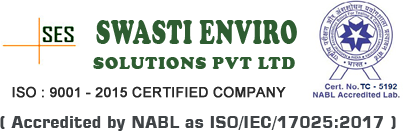Water Analysis Lab in Chennai

Knowing the quality of water is very essential. Whether the water is being used for irrigation, human consumption, fish growth or livestock suitability, Chennai Test House will help you to analyse the quality of water.
Swasti Enviro Solutions offers a wide range of testing solutions as listed below or call us and our experts will suggest you the test based on your requirement.
How can we test for these elements?
Fluoride: At least one color disk test kit is available for fluoride. However, portable digital colorimeters are often preferred because of concerns over accuracy
Arsenic: Portable field testing options for arsenic are limited; this contaminant is best measured in a laboratory. Commercially available test kits do exist, but they are relatively complex and require several steps
Nitrate: Both test strips and color disk test kits are available for nitrate testing. Nitrate can also be measured with a digital meter. High levels of nutrients are associated with agricultural pollution from fertilizers (nitrogen and phosphorous) and animal waste (nitrogen). Latrines, sewage, landfills, and industrial pollution can also contribute nitrogen. Monitoring for nitrate is a simple way to assess the impacts of agricultural and human waste on water quality.
Iron and Manganese: Both test strips and color disk tests are available for these two metals, which may also be measured using portable, digital instruments. Field testing with digital equipment is considered reliable for iron and manganese.
TDS: TDS includes a mixture of inorganic salts, mostly sodium, chloride, potassium, calcium, and magnesium. Rather than testing the particular components, TDS is monitored by measuring the conductivity of the water with a digital meterIn chlorinated distribution systems, it is important to monitor two more chemical parameters: pH and chlorine residual.
PH: pH test strips and color disk tests are widely available. More expensive, higher-tech options include electrode-based pH meters. PH is a measure of hydrogen ion activity, which means that it tells us how acidic or basic the water is. PH is not a pollutant, but it is a chemical master variable. It affects the behavior of other chemical constituents, including the effectiveness of residual chlorine against microbial contamination. Sudden changes in pH can also reveal treatment plant failures or pollution events in natural water bodies (for example, illegal industrial discharge).
Chlorine: There are many easy ways to test residual chlorine, including test strips, color disks, and even kits designed for testing swimming pools. Portable digital meters also exist that can provide reliable, quantitative measurements. Depending on local conditions and on the focus of a water quality monitoring project, more chemical tests can be added.

Leave a Reply
Want to join the discussion?Feel free to contribute!